Pàirt 2: 1750 – 1850: linn leasachadh àiteachais agus sgaoileadh na Beurla
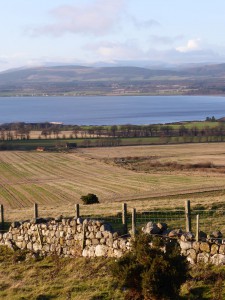 Chunnaic sinn mìos sa chaidh gum b’ i a’ Ghàidhlig an cànan a bu làidire ann am Machair Rois fad linntean, bho na Meadhan Aoisean tràth a-mach, ach gun do mheudaich cleachdadh na Beurla beag air bheag ann an suidheachaidhean formeil, gu h-àraidh am measg nan clasaichean poiliteagach agus foghlaimte, mòran dhiubh nan in-imrichean à ceann a deas na h-Alba.
Chunnaic sinn mìos sa chaidh gum b’ i a’ Ghàidhlig an cànan a bu làidire ann am Machair Rois fad linntean, bho na Meadhan Aoisean tràth a-mach, ach gun do mheudaich cleachdadh na Beurla beag air bheag ann an suidheachaidhean formeil, gu h-àraidh am measg nan clasaichean poiliteagach agus foghlaimte, mòran dhiubh nan in-imrichean à ceann a deas na h-Alba.
‘S ann rè an ama 1750 – 1850, eadar Ar-a-mach nan Seumasach agus an Dealachadh, a thàinig sreath atharrachaidhean a thug buaidh làidir air cor na Gàidhlig san sgìre. Cha do gabh an sgìre pàirt mhòr san Ar-a-mach fhèin ach chaidh buaidh “Ghallda” nan uachdaran a dhaigneachadh. Beag air bheag rug spiorad “leasachaidh” na linn orra, an toiseach air an fheadhainn le ceanglaichean ri Dùn Èideann no Lunnainn, far an robh na beachdan nuadh mun àiteachas gan sgoileadh, an uairsin air na nàbaidhean aca.
Fiù ‘s anns an Old Statistical Account (OSA), air a sgrìobhadh ann an 1791-99, tha iomradh air “monopoly of farms… individuals farming what was originally possessed by 4, 6, 8 and 10 tenants” , ach aig an aon àm bha “the old Scots plough” ga chleachdadh fhathast, cha robh am fearann “inclosed” (le feansaichean), agus bha cus “multures” (molltairean) air na daoine. A rèir ùghdair OSA bha Gàidhlig ga cleachdadh leis a’ mhòr-chuid de na daoine cumanta, ach “many of them now understand the English” – rud nach robh, gu follaiseach, cho àbhaisteach gu ruige sin. (Ref. OSA p.294,298)
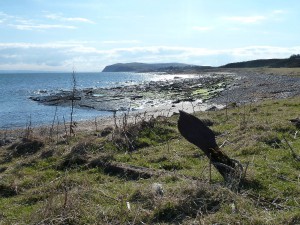 A thaobh foghlaim san sgìre, bha na sgoiltean-paraiste (air an ruith leis an Eaglais Stèidhichte) agus an acadamaidh ann am Baile Dhubhthaich a’ teagasg (gu h-oifigeil, co-dhiù) sa Bheurla, ged nach robh Beurla aig a’ mhòr-chuid de na sgoilearan, a rèir neach-eachdraidh Charles Withers (Gaelic in Scotland p.137) Aig an àm seo, bha Gàidhlig ga cleachdadh ann an sgoiltean SSPCK (Society in Scotland for Propagating Christian Knowledge) mar mheadhan-ionnsachaidh na Beurla, ach cha do nochd sgoil SSPCK anns an sgìre ro 1825 (ann am Baile an Todhair, le 11 sgoilearan, a rèir mapa Withers p.134) Bha cultar foghlaim an aghaidh na Gàidhlig, nach robh ceadaichte ach airson taic a thoirt do chleachdadh a’ Bhìobaill Bheurla, gus Gàidhlig fhèin fhàgail neo-riatanach ri ùine.
A thaobh foghlaim san sgìre, bha na sgoiltean-paraiste (air an ruith leis an Eaglais Stèidhichte) agus an acadamaidh ann am Baile Dhubhthaich a’ teagasg (gu h-oifigeil, co-dhiù) sa Bheurla, ged nach robh Beurla aig a’ mhòr-chuid de na sgoilearan, a rèir neach-eachdraidh Charles Withers (Gaelic in Scotland p.137) Aig an àm seo, bha Gàidhlig ga cleachdadh ann an sgoiltean SSPCK (Society in Scotland for Propagating Christian Knowledge) mar mheadhan-ionnsachaidh na Beurla, ach cha do nochd sgoil SSPCK anns an sgìre ro 1825 (ann am Baile an Todhair, le 11 sgoilearan, a rèir mapa Withers p.134) Bha cultar foghlaim an aghaidh na Gàidhlig, nach robh ceadaichte ach airson taic a thoirt do chleachdadh a’ Bhìobaill Bheurla, gus Gàidhlig fhèin fhàgail neo-riatanach ri ùine.
Ann an cunntas OSA chithear gun robh an t-iasgach gu math cudromach cuideachd agus na bailtean-iasgaich gu ìre mhath neo-eisimeileach, le comas luchd nan tuathanas a chuideachadh nuair a bhiodh gainnead ann (ged nach robh sin ro thric). Bho chunntas OSA tha dealbh againn de sgìre thorrach air tìr agus air muir, le uimhir de Bheurla ann mar-thà, dìreach a’ feitheamh ri a leasachadh.
Anns an New Statistical Account (1834-45) leughaidh sinn mu “very great improvements…within the last 30 years” ann an àiteachas (m.e. 1840, Fearn, NSA p.362), le mìneachadh nas soilleire anns na cunntasan mu pharaiste Thairbeirt, far an deach liosta a thoirt seachad de dh’uachdarain a chuir “modern husbandry” air dòigh anns an sgìre. Bha a` mhòr-chuid dhiubh à Lodainn an Ear bho thùs no dh’ionnsaich iad “the approved system of agriculture” an sin, agus – puing chudromach – nach tug “horses and implements…of the very best description from the south” a-mhàin leotha, ach “also farm-servants of his own training” / ” his own farmservants” /”a Lowlands grieve” amsaa (a’ sgrìobhadh mu Thairbeirt ann an 1840, NSA p.464). Ann am paraiste Neig, “the principal occupiers of the soil at present are, generally speaking, recent immigrants, and most of their numerous farmservants are entire strangers”/ ” a great many strangers have taken up their abode here”/”the system of farming has been quite changed” (1836, Nigg NSA 37). Cuide ris na Goill thàinig a’ Bheurla Ghallda, an turas seo am measg nan daoine cumanta cuideachd. Ann am paraiste Bhaile Dhubhthaich, “Gaelic has of late rapidly lost ground…in the country the change has not been quite so marked” (1836, Tain, NSA p.293)
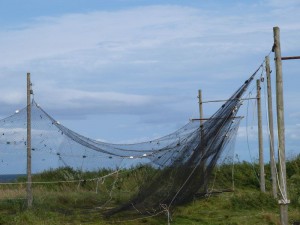 Feumar comharradh nach robh, a rèir coltais, an aon ùidh ann an leasachadh an iasgaich, m.e. cha robh fìor chalaidhean ann fhathast anns na ‘trì port’. Chan eil guth sam bith anns na cunntasan-paraiste NSA mun leithid – an sin ‘s e ‘business as usual’ a bha ann, agus dh’fhaodadh seo ciallachadh gun do mhàir a’ Ghàidhlig na bu treasa na b’ fhaide mar chànan làitheil anns na bailtean-iasgaich. Ged a bha sgoil SSPCK am Baile an Todhair (gu ìre dà-chananach), bha feadhainn eile “a dhìth” fhathast ann am Baile a’ Chnuic agus Gàthan (a rèir an NSA ann an 1840, mu Paraiste na Manachainn, p.363)
Feumar comharradh nach robh, a rèir coltais, an aon ùidh ann an leasachadh an iasgaich, m.e. cha robh fìor chalaidhean ann fhathast anns na ‘trì port’. Chan eil guth sam bith anns na cunntasan-paraiste NSA mun leithid – an sin ‘s e ‘business as usual’ a bha ann, agus dh’fhaodadh seo ciallachadh gun do mhàir a’ Ghàidhlig na bu treasa na b’ fhaide mar chànan làitheil anns na bailtean-iasgaich. Ged a bha sgoil SSPCK am Baile an Todhair (gu ìre dà-chananach), bha feadhainn eile “a dhìth” fhathast ann am Baile a’ Chnuic agus Gàthan (a rèir an NSA ann an 1840, mu Paraiste na Manachainn, p.363)
Gu ruige meadhan na naoidheamh linn deug, mar sin, bha sgìrean tuathanach Ros an Ear a’ fàs na bu ‘Bheurlaichte’, agus na bu choltaiche ris na siorramachdan Gallda, fad ‘s a bha na bailtean-iasgaich na bu Ghàidhealach agus na bu Ghàidhlige fhathast.
*****************************************
Part 2: 1750 – 1850 – the century of ‘Improvement’ and the spread of English
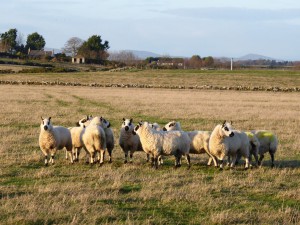 We have seen that Gaelic was the strongest language in Easter Ross over centuries, from the early Middle Ages onwards, but that the use of English gradually increased in formal situations, especially among the political and learned classes, many of whom were incomers from the south of Scotland.
We have seen that Gaelic was the strongest language in Easter Ross over centuries, from the early Middle Ages onwards, but that the use of English gradually increased in formal situations, especially among the political and learned classes, many of whom were incomers from the south of Scotland.
It’s during the period 1750 – 1850, between the 1745 Jacobite Rising and the Disruption in 1843, that a series of changes occurred which had a great influence on the state of Gaelic in this area. Easter Ross didn’t play a major part in the Rising itself, but the anti-Gael measures taken after Culloden served to strengthen the ‘lowland’ tendencies of the landlords. Gradually the spirit of (agricultural) ‘Improvement’ which had gripped the century began to take hold locally, first among those lairds with links to Edinburgh or London, where the new ideas about farming were being spread, then among their admiring neighbours.
Even in the Old Statistical Account of Scotland (OSA) compiled 1791-1799 (a sort of parish-by-parish overview of the country drawn up by local ministers, teachers etc – fascinating reading), there is already mention of a “monopoly of farms…. individuals farming what was originally possessed by 4, 6, 8 and 10 tenants”, although at the same time, “the old Scots plough” was still in use, the land had not yet been “inclosed” with fences, and there were allegedly too many “multures” (mill dues) imposed on the locals. A time of transition, then. According to the author of the OSA for this area, Gaelic was the everyday language of ordinary folk, but “many of them now understand the English” – something that clearly had not been the norm up to then. (Ref. OSA p. 294, 298)
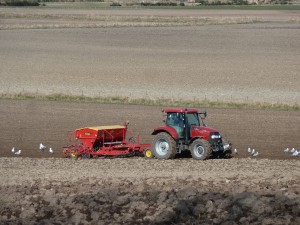 As regards education in the area, the parish schools (run by the Established Church) and the academy in Tain were (at least officially) by now teaching in English, although in fact the majority of the students couldn’t speak English, according to the historian Charles Withers (Gaelic in Scotland p.137), so it’s unlikely that policy was actually followed through. At that time Gaelic was used in the SSPCK-run schools (Society in Scotland for Propagating Christian Knowledge) but officially only as as a medium through which English could be taught, for Bible-reading purposes. (Children learned huge quantities of the Bible in English by heart, without understanding a word of it.) However there were no SSPCK schools in Easter Ross until 1825 (Balintore, with 11 pupils). The whole educational culture was against Gaelic, permitting it only as a means of learning English (especially for reading the English Bible), with the explicit aim of making Gaelic obsolete over time.
As regards education in the area, the parish schools (run by the Established Church) and the academy in Tain were (at least officially) by now teaching in English, although in fact the majority of the students couldn’t speak English, according to the historian Charles Withers (Gaelic in Scotland p.137), so it’s unlikely that policy was actually followed through. At that time Gaelic was used in the SSPCK-run schools (Society in Scotland for Propagating Christian Knowledge) but officially only as as a medium through which English could be taught, for Bible-reading purposes. (Children learned huge quantities of the Bible in English by heart, without understanding a word of it.) However there were no SSPCK schools in Easter Ross until 1825 (Balintore, with 11 pupils). The whole educational culture was against Gaelic, permitting it only as a means of learning English (especially for reading the English Bible), with the explicit aim of making Gaelic obsolete over time.
In the OSA accounts for Easter Ross we see that the fishing was also very important at the time, and the fishing villages were to a large extent self-sufficient communities, able even to help out the inland farming community in times of need (though these were rare). From the OSA at the end of the 18th century we have a picture of an area fertile on land and at sea, with a basic quantity of English already in place, just waiting to be “improved”.
40 to 50 years later, in the New Statistical Account (NSA) of 1834 – 1845, we read about “very great improvements…within the last 30 years” in agriculture (1840, Fearn, NSA p.362), with particular detail in the account of the parish of Tarbat, listing the landlords or farm managers who introduced “modern husbandry” to the area. Most of these had moved up from East Lothian, or had at least studied ” the approved system of agriculture” there, and – importantly – had not only brought “horses and implements…of the very best description from the south” with them, but “also farm-servants of his own training” / ” his own farmservants” /”a Lowlands grieve” etc (written about Tarbat in 1840, NSA p.464). In the parish of Nigg “the principal occupiers of the soil at present are, generally speaking, recent immigrants, and most of their numerous farmservants are entire strangers”/ ” a great many strangers have taken up their abode here”/”the system of farming has been quite changed” (1836, Nigg, NSA p.37). Along with the Lowlanders the Scots tongue came into the area, this time increasingly amongst the ordinary people too, not just the administrative classes as in earlier times. In the parish of Tain, “Gaelic has of late rapidly lost ground…in the country the change has not been quite so marked” (1836, Tain, NSA p.293).
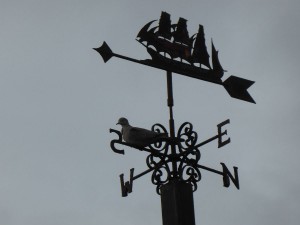 It should be noted that there was apparently not at all the same interest in ‘improvement’ as regards the fishing, e.g. no real harbours yet in the Villages. There’s no mention whatsoever of such a thing in the otherwise enthusiastically pro-improvement parish accounts of the NSA, the main impression being that it was ‘business as usual’ in that area, and this would have meant that Gaelic remained stronger for a longer period as the everyday language of the villages. Although as we saw there was a small SSPCK school in Balintore (to some extent officially bilingual), others “were still lacking” in Hilton and Geanies, according to the NSA for Fearn in 1840 (p.363).
It should be noted that there was apparently not at all the same interest in ‘improvement’ as regards the fishing, e.g. no real harbours yet in the Villages. There’s no mention whatsoever of such a thing in the otherwise enthusiastically pro-improvement parish accounts of the NSA, the main impression being that it was ‘business as usual’ in that area, and this would have meant that Gaelic remained stronger for a longer period as the everyday language of the villages. Although as we saw there was a small SSPCK school in Balintore (to some extent officially bilingual), others “were still lacking” in Hilton and Geanies, according to the NSA for Fearn in 1840 (p.363).
Up to the middle of the 19th century, then, the farming areas of Easter Ross were becoming more Anglicised, more similar to the Lowland counties, while the fishing villages were still more Highland and more Gaelic.